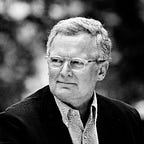Living with paradoxes
Either or thinking in strategy and management arises from the Aristotelian logic, which requires a choice, the elimination of paradoxes and dilemmas. Examples of these dilemmas are competition and collaboration or saving money and creating a better customer service— at the same time.
These dilemmas, if not resolved through choice and decision were seen as a sign of faulty thinking. As an alternative one could think of a problem of as a creative opportunity.
There are many different definitions of a paradox. It may mean a contradiction, a situation in which two conflicting elements exist at the same time. A paradox in this sense can be removed by choosing one side instead of the other or by reframing the problem to remove the contradiction. A paradox may also mean a state in which two opposing needs are simultaneously present, neither of which should be eliminated, as often is the case in politics. There is therefore no possibility of a choice between the opposing poles or locating them apart without destroying the common movement of thought.
What is then required is a different kind of logic, such as the approach of Hegel instead of Aristotle. In Hegel’s thinking, the word paradox means the natural, and necessary, presence of conflicting ideas at the same time. A paradox is then the essential requirement for creativity and transformation.
Paradoxes are a requirement of life.
We live in a time when we have compartmentalized ourselves into disciplines, using highly engineered processes in the name of efficiency and productivity. But if success is a result of learning and innovation, we need to think differently, we need to cross boundaries to create new insights.
Crossing boundaries is always about working with differences. This is why differences are potentially conflictual in nature, and this is something we should now welcome. Conflicts give rise to the possibility of innovation and the potential for finding totally new solutions.
Another example of this is the mathematical concept of chaos in the sciences of complexity. There the edge of chaos is a dynamic pattern in time that is stable and unstable at the same time. Stability and instability are inseparable. The dynamic is paradoxically both predictable and unpredictable. It is about predictable unpredictability or unpredictable predictability, stable instability or unstable stability.
The contradiction and dilemma between stable and unstable cannot be resolved, but gives rise to the potential for creativity and innovation. It is time to refresh our thinking about strategic choice in management. It is time to embrace complexity and the enormous creative potential of live paradoxes, if we keep them alive!
